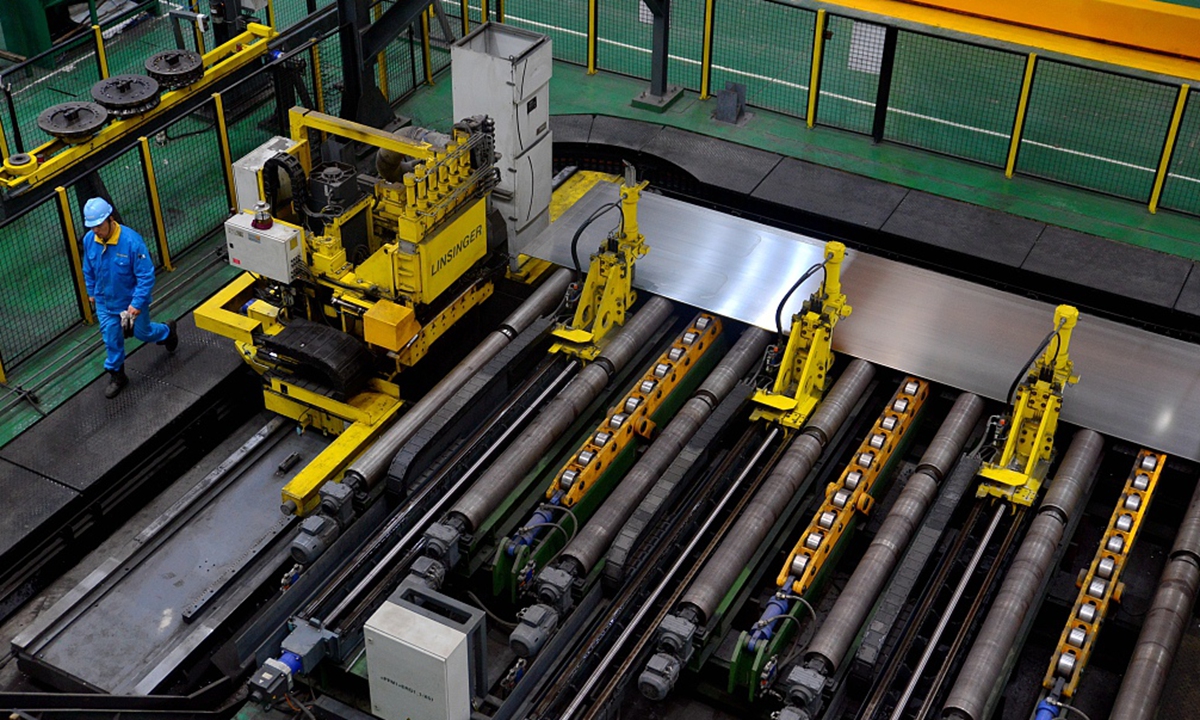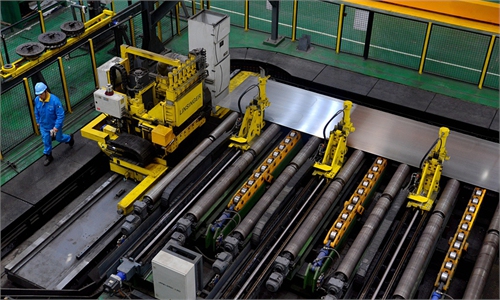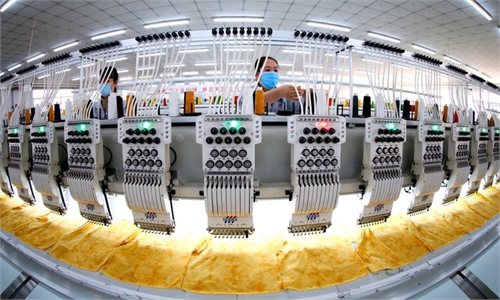China's Caixin Manufacturing PMI in October bounces back to expansion territory of 50.6

Industry PMI Photo:VCG
China's private Caixin manufacturing purchasing managers' index (PMI) bounced back into the expansion territory to stand at 50.6 in October, showing the resilience of China's manufacturing sector despite temporary challenges including a prolonged power crunch.
The 50.6 figure has beaten market expectations of 50, as well as rebounding by 0.6 percentage points compared with September. An above 50 PMI suggests expansion, while reading below 50 shows a contraction territory.
Since May 2020, the Caixin PMI has dropped into the contraction domain only in August, which attests to the fact that China's manufacturing sector is expanding at a stable pace despite challenges including a prolonged and rising raw material costs.
According to an article of Caixin on Monday, its sub-index for new orders has risen to a new peak in four months, as driven by a rebound in domestic demands. Foreign demand, however, still lagged behind as companies face problems like sales difficulties and delivery impediment.
Wu Chaoming, the chief economist at Chasing Securities, said that China's exports are still being pressured by the slowing economic rebound in many major economies, which would drag on China's overall demands. At the same time, domestic demands would also be restricted by the outbreak of crises incidents in property market, as well as the government policies to restrict "two highs"---China's expression for high energy consumption and high polluting.
Caixin's sub-index for production had also corrected in October compared with September and had remained in the contraction territory for the third consecutive month, as production was bugged by problems like power crunch, raw material shortage and rising costs.
According to data released by the National Bureau of Statistics (NBS), China's official PMI in October retreated to 49.2, down 0.4 percentage point from the previous month.
Global Times

Industry PMI Photo:VCG
China's private Caixin manufacturing purchasing managers' index (PMI) bounced back into the expansion territory to stand at 50.6 in October, showing the resilience of China's manufacturing sector despite temporary challenges including a prolonged power crunch.
The 50.6 figure has beaten market expectations of 50, as well as rebounding by 0.6 percentage points compared with September. An above 50 PMI suggests expansion, while reading below 50 shows a contraction territory.
Since May 2020, the Caixin PMI has dropped into the contraction domain only in August, which attests to the fact that China's manufacturing sector is expanding at a stable pace despite challenges including a prolonged and rising raw material costs.
According to an article of Caixin on Monday, its sub-index for new orders has risen to a new peak in four months, as driven by a rebound in domestic demands. Foreign demand, however, still lagged behind as companies face problems like sales difficulties and delivery impediment.
Wu Chaoming, the chief economist at Chasing Securities, said that China's exports are still being pressured by the slowing economic rebound in many major economies, which would drag on China's overall demands. At the same time, domestic demands would also be restricted by the outbreak of crises incidents in property market, as well as the government policies to restrict "two highs"---China's expression for high energy consumption and high polluting.
Caixin's sub-index for production had also corrected in October compared with September and had remained in the contraction territory for the third consecutive month, as production was bugged by problems like power crunch, raw material shortage and rising costs.
According to data released by the National Bureau of Statistics (NBS), China's official PMI in October retreated to 49.2, down 0.4 percentage point from the previous month.
Global Times


